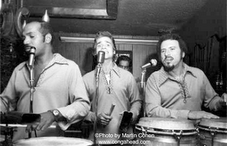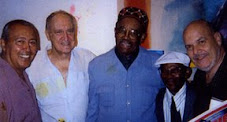In Haiti’s slogan “In Union There is Strength,” L’Union Fait la Force, came the solution. General Rafael Trujillo had acquired a cruise ship called the New Northland from the Canadian Clarke Steamship Company as a wedding yacht for one of his daughters. He renamed it SS Nuevo Dominicano and teamed up with Leslie Frazier, a banana importer, to have her carry fruit to Florida. Why not carry eager suckers instead of bananas? Thus, an evil trinity evolved: Trujillo, Frazier, and Haiti’s president, Paul Magloire, all interested in profiting from, not so much the business bonanza of tourism that was just becoming evident, but from a casino in Port-au-Prince on the harbor. The French mob was also involved.
Haiti had also caught the attention of the Lansky Florida-based mob. Out of Dania, Florida, where they controlled Jai Alai and dog races as well as the Gulfstream Racetrack, the mob succeeded in placing a foothold aboard the SS Nuevo Dominicano in the form of a shipboard “casino” consisting of three restored one-armed bandits. These relics were encrusted with barnacles, having been brought to the surface from the bottom of the Hudson River where Mayor LaGuardia had thrown them. Trujillo decided to invite the Sindicat from France to take over gambling on the waterfront Casino International d’Haiti that Magloire had built, using the ship for transportation. This overloaded setup between France, the Dominican Republic, Haiti, and the Florida mob was beginning to flourish. The mistake that caused it to fail, and to bring Haiti down with it, was a woman . . . cherchez la femme . . . Madame Getulio Vargas!
Brazil had shared a common tragic history with Haiti in terms of slavery’s struggles for freedom from foreigners. She became Haiti’s protectoress, a sister republic. “Never again shall a colonist or a European set his foot upon this territory with the title of master or proprietor.” This is taken from the Liberty-or-Death Proclamation, dated 28th April, 1804 Headquarters at the Cape Haitien, first year of independence. It was signed by the Governor-General, Jean-Jacques Dessalines, who died assassinated. Brazil had to rid itself of the Dutch, the French, and the Braganza Dom Pedro II of Portugal to become independent.
The wife of Getulio Vargas, the president of Brazil in 1951, discovered that the Casino International d’Haiti, under the influence of the French mob, was presenting “immoral entertainment.” She had her husband shut down the magnificent Quintandinha Casino in Petropolis, Rio. This was followed by pressure on Magloire to close the Haitian casino that was presenting Las Vegas-type floor shows, and preparing to invite the then shocking Follies Bergères.
Madame Vargas’s interference encouraged complicity and plotting by the casinos in Carasco, Uruguay; Mar del Plata, Argentina; and Estoril in Portugal, as well as the Las Vegas crowd, all of whom feared Haiti’s unwelcome competition. They got hold of Madame Vargas’s ear. The result doomed Haiti’s chance to grow as a gambling mecca and as a more modern, prosperous country, albeit in violation of the moral principals of the Catholic Church.
Haiti and Brazil were, and may still be, ninety-nine percent Catholic; they were also anti-abortion and anti-divorce, causing population problems to explode in favelas, multiple shanty towns, and in a plethora of corrupt construction contractors. It also meant mud slides and deaths, like the 2008 schoolhouse collapse in Petionville. Prior to the earthquake, Brazil had 3,000 peacekeepers helping control Haiti. Public school education was diminished in favor of Catholic schooling. A casino without sexy showgirls is a castrated casino, but was the only one acceptable to the regime. Getulio Vargas also considered Voudou a pagan menace. When he was defeated after elections, an outburst of gaiety erupted similar to our post-Prohibition flapper era. It gave birth to today’s Rio Carnival, which under Getulio had been a sham, consisting of a parade of cars honking horns along Copacabana. He feared it might become rebellious.
When the French took off, Haiti was swept under the rug. In Coney Island, the mob destroyed its buildings and committed arson to lower real estate prices. This led to Coney Island’s abandonment, and any hopes of future casino establishments. But in Haiti, all this sudden activity awakened a sleepy island that was now aware of the resiliency of its people and of gambling’s commercial advantages. But the likelihood of a happier, prosperous Haiti — thanks to gambling — and French savoir-faire and politesse, slowly died, taking gaieté parisienne with it. No longer did one notice the ladies in Port-au-Prince wearing the latest French imports — Lanvin, Hermès, Chanel — or smelling of Fragonard and Madame Rochas, that they had purchased from Elias Neustas, a Lebanese shopkeeper who originated the duty-free, tax-free concept. Gone was Fisher, the German professor/anthropologist whose warehouse-type business sold Haitian primitive paintings that were catching on internationally, along with animal skins, snakes, seashell jewelry, tortoiseshell and mahogany furniture. Also lost was an enormous stock of drums that were hand-carved on the outside with Voudou motifs that are today collectible, dedicated to Ayan, Ghana’s god of the drum, and to Atumpan, Ti-Roro’s talking drum.
Ti-Roro, the foremost tambourist, was at this time entertaining us at the El Rancho Hotel poolside, where we took up collections for him and his three companion drummers. Why are Haitian drummers accepted as the best world drummers from West Africa to the West Indies, where there are supermarkets and people wearing shoes, compared to Haiti’s penury? The drums of Haiti are angry-sounding, violent. Slavery is long gone, except in Haiti where people are economic slaves, hungry, hopeless, and helplessly dependent for survival on once-despised foreigners and now aid agencies for their marginal survival. The monopolistic cruise industry bought islands that diverted shoppers from the modest straw markets of Haiti, leaving the little man or woman to expire under his or her roadside canope. The cruise bosses discouraged, and may have contributed to, crime in Port-au-Prince in order to profit from the millions their passengers would otherwise have spent ashore. Nor could Haiti compete touristically.
Puerto Rico’s El San Juan Hotel, Hilton, and El Conquistador at Las Croabas had found the golden egg of tourism closer to Miami than Haiti’s one-runway airport. Tourism found Martinique, where in Fort de France, Roger Albert had become the mayor based on his modernization of his tiny perfume shop, and where FOYAL (Fort Royal), the French restaurant in Martinique’s port area, now served excellent fish dishes, with old-rum banana flambé for dessert. This was added to Josephine’s Empress mystique and the Mount Pelee Volcano’s 20,000 victims, or to Guadeloupe’s beaches. Cruise ships carried their human cargo from the Antilles françaises to South and Central American ports. Gone were the days when, in order to reach Caracas from La Guaira, tourists had to board an elevator to reach part of the way up the mountainside in order to continue the rest of the ascent by mule. Nothing could stop tourism, except the mob.
Thirty fabulous liners leave Miami, some carrying two thousand passengers (read, shoppers) to faraway islands and places the companies discovered, like Roatan, Honduras, and Nicaragua’s Puerto Limón, the Mexican Riviera, bypassing Haiti. Was this part of a plot to punish the Haitians for expelling their casino?
In 1952, the SS Nuevo Dominicano, on its way to be scrapped, was sunk, typically, for its insurance, off the coast of Cuba. Lloyd’s of London, wise to mob crimes, sent divers down and discovered open sea cocks. They put the captain and others in jail in the Dominican Republic. The crew had been classified as being part of La Flota Mercante de la República Dominicana. They were classified as part of the navy and were paid one dollar a day. She was nicknamed a pirate ship, with her one hundred passengers and crew members dressed as pirates at the Captain’s Dinner on the last night out. With the loss of the ship, gone were the evenings in Haiti spent dancing to Cole Porter’s 1938 “Begin the Beguine,” drinking Five-Star Babancourt ron at Cabane Chachoune in Petionville, all now completely erased except in memories.
In 1951, we were on our maiden voyage to Haiti. Fascinated by the amateur films of Voudou brought to us in 1945 by Maya Deren, we had expected to be welcomed by drumming, a rumba band as in Havana, or a steel band, as we glided doucement over the calm, pitch-dark water of the harbor. We had arrived around midnight when all was asleep, wrapped in dark shadows, with mysterious mountains whose heights were well hidden and inestimable. How were we to know until morning that the casino operators, experienced in showmanship, had installed a red carpet that began at the foot of our gangplank. They had hired for our shore excursions taxi drivers and pretty guides that knew some English, eliminating those who spoke only Kriol. The casino croupiers and table men were from France, the menu was select, printed in both languages, Château Margaux and the rest were available, along with Haitian absinthe, illegal as toxic in America. Chanel No 5 was in the air and an aperitif was extended to the ship’s officers aboard the SS Dominicano. But who would have thought that in the stillness of a pitch-black late-night arrival, as we silently made for our mooring inch by inch, that we would hear coming across the harbor Claude Debussy’s “Claire de Lune.” Haiti will bounce back again. Of that there is no doubt. It is in her beautiful children that she will find her true happiness, which no one can rob her of.
En quittant la ville Jacmel
Pa’ m’allé au balle
Panama ma tombé
(Repeat)
Ramasi lui pour moi. . . .


